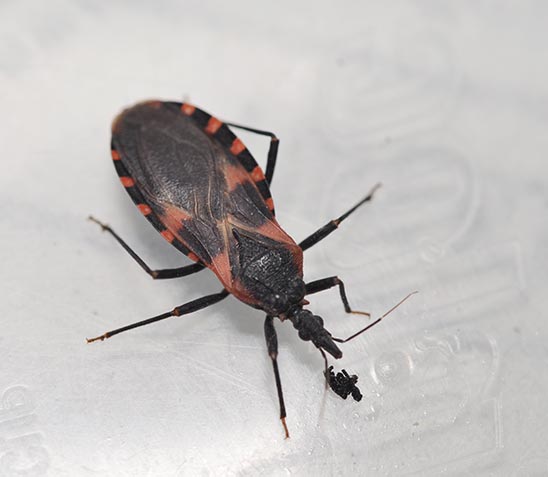UK entomologist discusses kissing bug, impact on Kentucky
UK entomologist discusses kissing bug, impact on Kentucky

The kissing bug may sound like a virus that plagues the protagonist of a romantic comedy, but in fact, these insects are real, and one species does occur in Kentucky. These blood-feeding insects have received a lot of media attention due to the potential health effects of their bites in the southwestern United States. University of Kentucky extension entomologist Lee Townsend recently discussed what Kentuckians need to know about the insect.
“A species of kissing bug lives in Kentucky, but the insect is not commonly seen. It occurs in wooded areas where it lives in the dens of various animals,” said Townsend, a faculty member in the UK College of Agriculture, Food and Environment. “At UK, we have only occasionally received adults that were captured from inside homes, usually near or in wooded areas. Few bites have been reported. Kissing bugs will fly to outdoor lights, especially in the fall, and some will find ways inside.”
Adult kissing bugs range from between three-quarters of an inch to 1.25 inches in length. Most have a striped band with red or orange markings around their bodies. Their mouthparts look like a large black extension jutting out from their head. They are most active at night and feed on a variety of animals and humans, similar to bed bugs.
It’s not the kissing bug’s bite, but rather Chagas disease that can cause severe and chronic health problems in humans. The Chagas disease is found mostly in the kissing bug species located within Latin America. Infected bugs can transfer this disease to humans while feeding, but according the Centers for Disease Control and Prevention, the disease is extremely rare in the species that is in Kentucky and throughout much of the United States.
“The feeding habits of the species we have here do not make it a very effective vector, even if it is carrying the pathogen,” Townsend said. “While the insects are called deadly, bites from bugs not infected with the pathogen are similar to a bad mosquito bite, tending to swell, itch and then improve.”
Individuals who believe they have found a kissing bug, should send a sample to their local office of the UK Cooperative Extension Service for identification before beginning any control steps, as they closely resemble other insects commonly found near homes.
Kentuckians can protect themselves from the kissing bug the same way they would many other insects, by making sure cracks and crevices around their home are sealed, removing wood piles around the home and turning off outside lights when not needed.
Entomology Extension


